B&O Railroad Potomac River Crossing
Introduction
Text-to-speech Audio
Until 1824, Harper's Ferry relied on the ferry of the same name for transportation across the Potomac River. Since then, five bridges have been built over the Potomac, though only two are still standing. These bridges would be one of the factors that made Harpers Ferry into one of the most sought after positions in the Civil War, where it changed hands eight times between 1861 and 1864. The crossing was added to the National Register of Historic Places in 1978.
Images
Aerial view of the bridges. The Piers of the Bollman Bridge are still visible on the left.
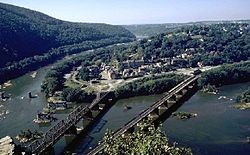
View of the 1894 bridge from the Harpers Ferry side
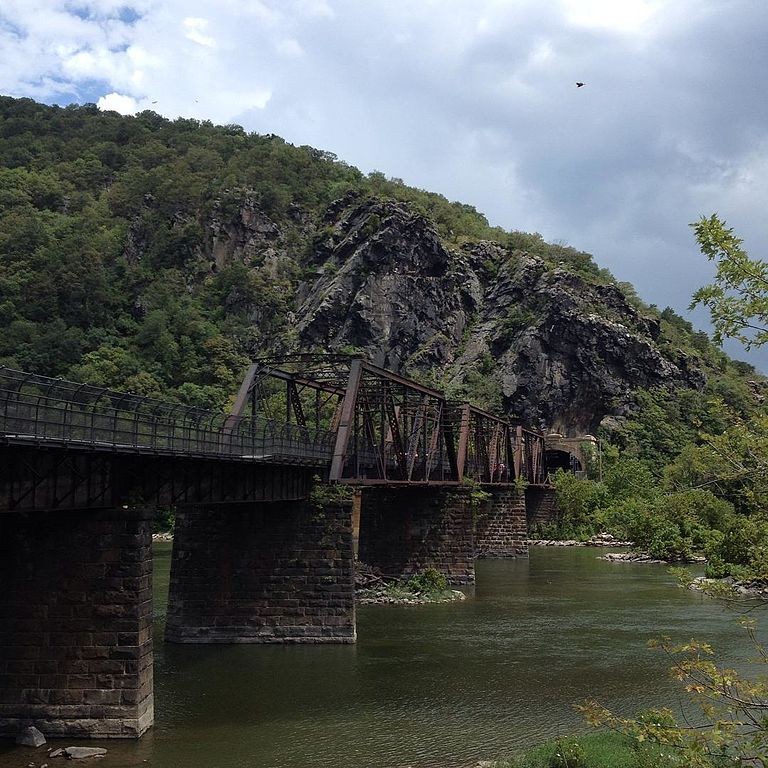
Old photo of the Bollman Bridge from the Maryland side, ca. 1851
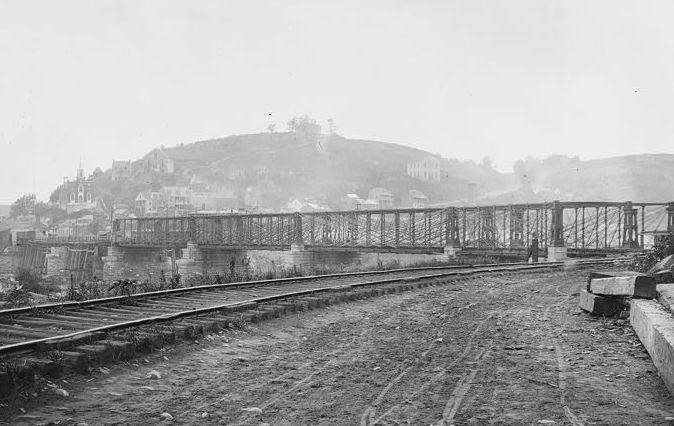
CSX freight train crossing the 1930 bridge
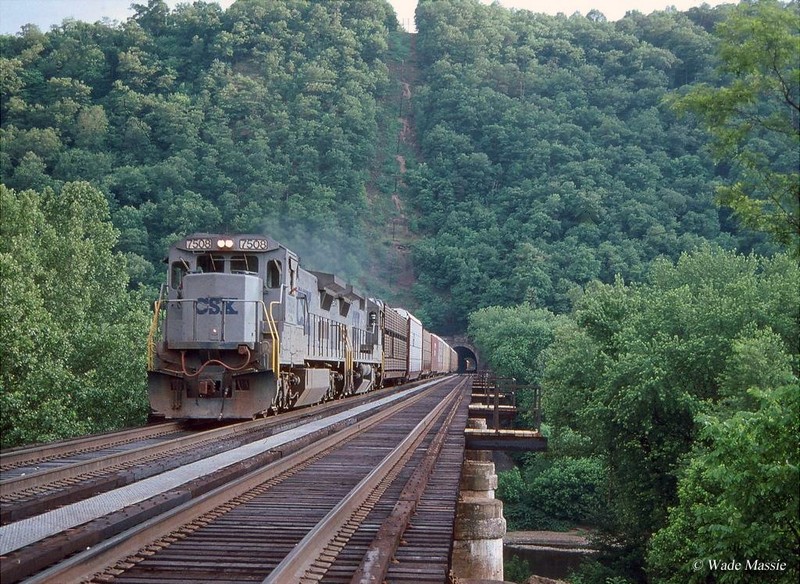
1894 B & Railroad Trestle (Photo by David T. Gilbert, October 1994)
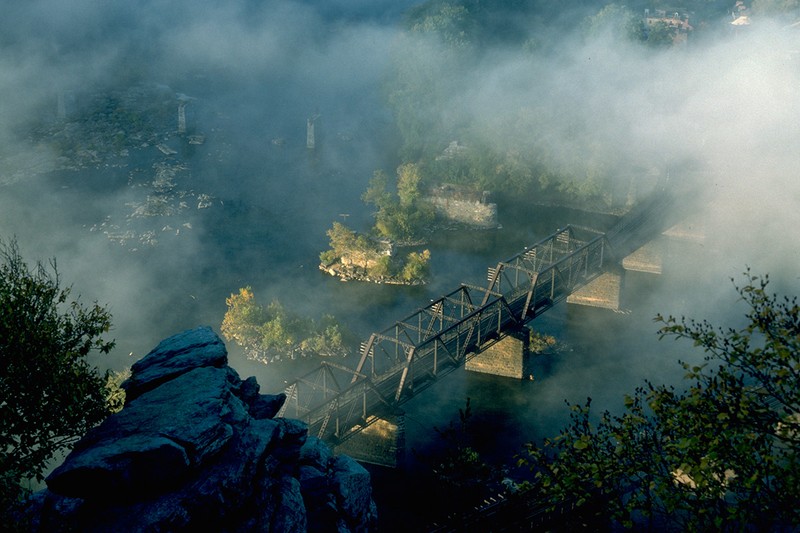
"1931 aerial photo of Harpers Ferry, looking west up the Potomac River. In addition to the town’s four bridges, the Armory Dam, Armory Canal, and C&O Canal (lower right) are also visible. (HF-289, Historic Photo Collection, Harpers Ferry NHP)"
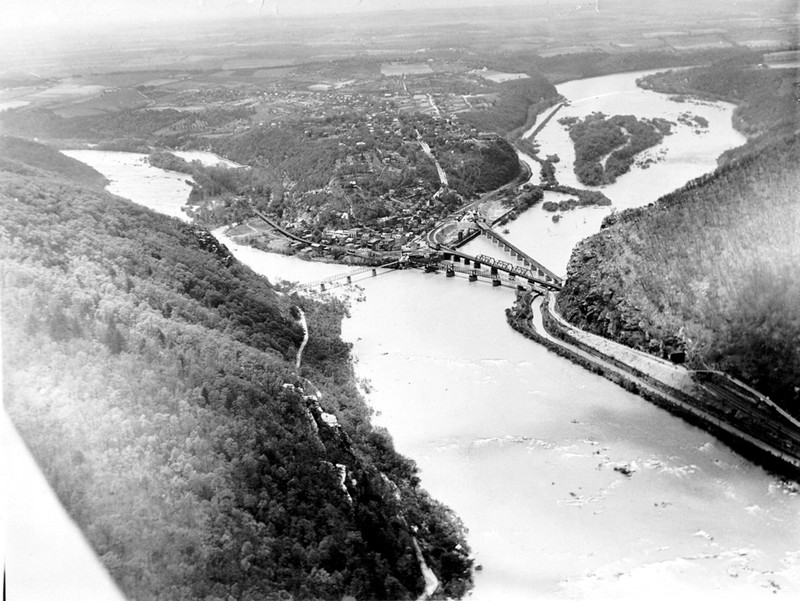
Backstory and Context
Text-to-speech Audio
Until 1824, the town of Harpers Ferry and the surrounding area had to rely on a ferry of the same name for reliable transportation across the Potomac River. The first bridge was constructed in 1824 and was a wooden road. This was replaced in 1839 by a covered wooden truss about eight hundred and thirty feet long and capable of supporting the weight of a steam engine. An additional bridge was constructed alongside it in 1851, this time made out of metal in the Bollman Truss design.
These two bridges were massive targets during the Civil War. Due to Harpers Ferry's relative proximity to the capital, they made the town into an immensely valuable strategic location. Controlling the Harpers Ferry junction was an effective choke-point to the north or the south. During the three years of fighting, Harpers Ferry changed hands eight times and the wooden bridge was destroyed in 1861.
After the Civil War, two more bridges were constructed in 1894 and 1930 to accommodate the increasing weight of newer steam trains. The Bollman Truss bridge had been replaced with a new version in 1870, but it was washed away in a flood in 1936, leaving only the piers that used to hold it up. Both of the remaining bridges are now used by CSX for its Shenandoah (1894 bridge) and Cumberland (1930 bridge) Lines. The crossing was added to the National Register of Historic Places in 1978.
Cite This Entry
Admin, Clio, Robert Strider on behalf of Appalachian Studies Association , and Kathleen Thompson. "B&O Railroad Potomac River Crossing." Clio: Your Guide to History. October 18, 2021. Accessed March 18, 2025. https://theclio.com/tour/1119/21/reverse
Sources
B&O Railroad Bridge at Harpers Ferry – 1836. Structure Magazine. http://www.structuremag.org/?p=4068.
B & O Railroad Potomac River Crossing - 1893. Waymarking. August 21, 2011. http://www.waymarking.com/waymarks/WMCC8Z_B_O_Railroad_Potomac_River_Crossing_1893_Knoxville_MD.
National Register of Historic Places Nomination Form. National Parks Service. http://www.wvculture.org/shpo/nr/pdf/jefferson/78001484.pdf.
"Baltimore & Ohio Railroad Bridges." Dave Gilbert Graphic Design. Accessed August 10, 2021. http://www.dgilbert53.net/?page_id=871.
"Baltimore & Ohio Railroad Bridges." Dave Gilbert Graphic Design. Accessed August 10, 2021. http://www.dgilbert53.net/?page_id=871.

